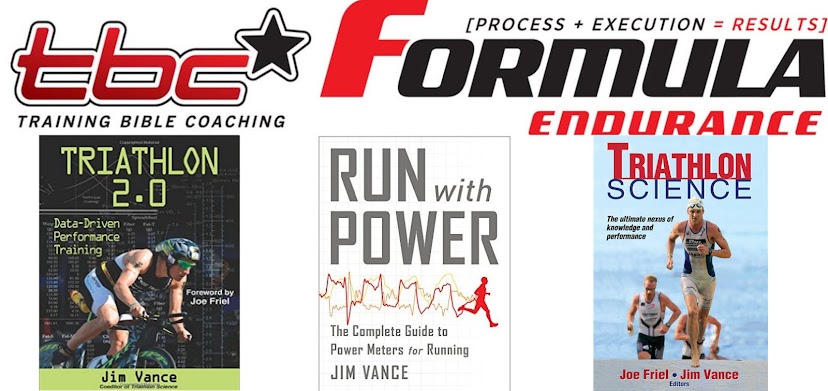Thursday, May 27, 2010
Training Enemy #1 - Stress
Thursday, May 13, 2010
Coach Vance Newsletter May 2010
Wednesday, May 12, 2010
Overall Fitness Monitoring and Data-Driven Training Decisions
By Jim Vance
Are you using WKO+ to its fullest? Sure, you probably look at individual workout files, and see how a session went, but do you see the bigger picture? Do you see quickly and easily if your athlete is progressing at the rate and in the ways you want to see?
WKO+ is known as a popular software program for analyzing power files, and seeing how a specific workout went. Though the software is great for individual workout analysis, this pales in comparison to what a coach can see and how they can better manipulate the training and periodization of the athlete, based on the bigger picture of fitness and performance.
WKO+ allows coaches to see the entire picture of fitness and performance, not just a single session. Most coaches never look past the single session, and therefore miss the opportunity of seeing if the athlete is truly progressing or regressing toward their goals.
After athletes record and log workouts, uploading data from their training devices, we want to look for trends within the data. WKO+ allows coaches and athletes to set-up charts which show the trends of output and performance. Here is an example of a chart I use for some of my cyclists:
The chart shows the trend of the average watts per kilogram by week, that I am tracking for the season of outputs for all rides. I want to make sure I’m seeing the upward trend I want to see, as this athlete prepares for their goal race in October. The continual upward trend shows me if the athlete is progressing as we hope. If we are not seeing this upward trend, then we must make decisions on how to adjust the training, given the data. Data-driven training decisions are the key to avoiding performance plateaus and regression.
This chart below, does the same thing as the previous chart, only it focuses on running and the average run pace for the athlete of all runs, in kilometers per hour, by week of the season.
Again, I want to see an upward trend, and that is what I’m seeing. When I don’t see the trend, I must make decisions as a coach, on how to rectify the trend. Though I may typically think that my training decisions are correct, individual differences in athletes make data-driven decisions much more effective for all athletes we coach.
I believe more in studying the bigger picture of fitness than the smaller, individual workout files. I have been doing this long enough to begin to see a plateau in performance before the athlete can. This is critical, because by the time an athlete tends to notice, the damage is already done. They have lost quite a bit of confidence, and maybe even seen fitness regress.
Many coaches make training decisions based upon tradition. “We always do six weeks of base work,” or “We must do eight weeks of VO2 max training,” for example. This is training by tradition, not by data. What if the data shows your athletes already have the aerobic base they need by week four? What if after five weeks of VO2 max intervals, your athletes are at a plateau? These are lost weeks where a coach could switch the training focus to other areas of weakness, and make the athlete ready for even better performance. This is data-driven decision making, and WKO+ is a key tool for seeing this.
Set up your charts in WKO+ to look at the bigger picture of the season. Many coaches pay attention to the Performance Management Chart, (PMC), and it’s a good tool for monitoring, but it is not the only one for monitoring fitness and adaptations.
In the next article, I will discuss how you can adapt the PMC for better overall monitoring of fitness thru the season.
Jim Vance is a USAT Level 2 and Elite Coach for TrainingBible Coaching. You can see many of his webinars on WKO+ at Performancewebinars.com and follow his writings and training advice at his coaching blog, CoachVance.blogspot.com. Questions or comments can be sent tojvance@trainingbible.com.
Improve Your Bike Splits Talk Now Available for Download
Friday, May 7, 2010
Cramping - Questions and Answers
Question for you. Last week I did a Sprint, my second of the season. The water was 64 degrees but I had a wetsuit on. Both my calves cramped up very early into the swim. This has never happened before and I have been doing the shorter races for 20 years. Any thoughts?
Thanks,


